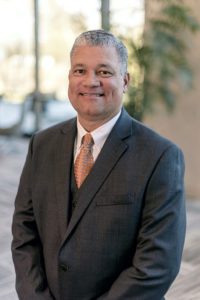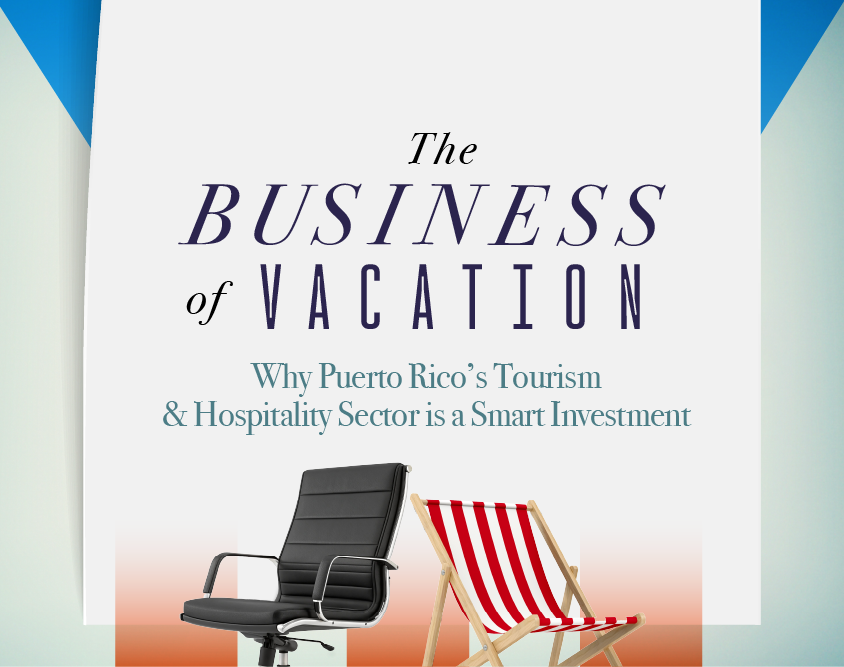Originally published in the January 2022 issue of Chief Executive.

Since 1997, John Biagas, CEO of Bay Electric Company, has operated the electric service and engineering company from its headquarters in Newport News, Virginia. But over the past year, he and his wife began thinking about a change. They didn’t want to stop running the company — they just wanted to run it from someplace else.
He learned about the prospect of relocating to Puerto Rico from a colleague in the Young Presidents’ Organization who had been training apprentices in Puerto Rico and teaching them the shipbuilding trade. “And then he takes those workers and sends them back to the mainland for ship repair work.”
When Biagas looked into the island as a possible new home, he realized that it might be perfect timing: as part of a restructuring deal post-Hurricane Maria, Puerto Rico is using $80 billion of federal dollars for an infrastructure overhaul. “The electronical [sic] infrastructure here needs a lot of upgrading and that fits into our core type of work that we do throughout the East Coast,” he says. “We also do a lot of battery charging stations, and with the generational shift to electrical [sic] vehicles, they’re going to be upgrading and adapting— it’s a very good fit for us.”
Biagas is not alone. An increasing number of businesses are finding, to their surprise, the U.S. territory nestled in the Caribbean has a lot more going for it than just beautiful beaches and balmy weather. For starters, access to top talent is a well-kept secret: Puerto Rico boasts the second-largest concentration of women engineers in the country and the sixth-largest concentration of STEM workers in the world, plus 88 universities, including the University of Puerto Rico-Mayagüez, which is the leading producer of scientists and engineers for NASA.
Solid Pipeline for Talent
Most of the island’s universities have a long history of partnering with both the aerospace and pharmaceuticals industries, says Rodrick Miller, CEO of Invest Puerto Rico, the island’s economic development organization. “[They] understand that they’ve got to work arm-in-arm with industry in terms of how they design their programs and the level of readiness of their students and what are the competencies that students need to have to thrive in the world,” he says. “So those partnerships are deep and wide.” The island is currently the largest exporter of biopharmaceuticals in the U.S. and the world’s fifth-largest pharmaceutical manufacturing hub by volume; it is also home to more than 80 manufacturing facilities operated by some of the largest drugmakers, including Amgen, Johnson & Johnson, Medtronic, Becton Dickinson, and GlaxoSmithKline, amongst other large-scale manufacturers.
With the lowest labor costs of any region under U.S. jurisdiction, and an unemployment rate that is two to three times that in mainland U.S., Puerto Rico offers an enviable talent pool for companies that have been plagued by skills shortages and high turnover. “It’s a bit of a captive workforce here,” says Biagas, who currently employs 40, but expects to ramp up in the near future. He is also working on a possible apprenticeship and training in San Jose to teach solar work and train them on some of the newer technologies in solar. “If you make sure people are happy here and give them a great job and a great opportunity, it only gets better.” The island’s culture — which is “about hard work and trying to get ahead” — has also been a good fit for Bay Electric.
Biagas adds that the 2019 Puerto Rico Incentives Code was a big draw as well. Act 60, as it’s known, promotes economic growth through investment, innovation and job creation, offering a host of tax benefits to companies that export goods or services out of Puerto Rico, including a 4 percent corporate tax rate and up to 50 percent back in tradeable tax credits on R&D expendi- tures. (As another plus, individuals who move to and live on the island more than half the year can enjoy 0 percent personal income taxes on dividends and net capital gains.)
“We’ve got the most aggressive incen- tives in the U.S., by far,” says Miller. Biagas, for his part, estimates that his current corporate tax rate would hover around 50 percent on the mainland. “And for us, the great advantage of the 4 percent rate is that it’s going to allow us to really reinvest tremendously in our company.”
But while companies may come be- cause of the incentives, “that’s not why they stay,” he says. “They stay because of the value.”
The Value Proposition
For real value, Miller points to high rates of worker loyalty, with an average turnover rate between 2-3 percent. He notes that days after Hurricane Maria, which devastated the northeastern Caribbean in September 2017, “people were right back at work. Even if their homes weren’t there, if they hadn’t figured out their personal situations, they were back at work because people are glad to have jobs and they’re loyal to their companies here.”
Miller says that since the pandemic began, and particularly as the Great Resignation has gotten under way stateside, he’s been inundated with queries from mainland employers desperate for employees who are eager to work and contribute. “I literally was getting bombarded with resumes every week from random people around the globe, and on the flip side, by companies saying, ‘yeah, I know your job is to bring companies to the island—but can we find the workers that we need?” So Miller’s team set up a LinkedIn group specifically focused on making those connections.
They were also being inundated with requests from potential investors looking for opportunity, driven in part by the fact that about 98 percent of Puerto Rico is considered an Opportunity Zone. “But as an organization, we weren’t set up with a pipeline of companies or projects to invest in, because we were focused on bringing in the companies from outside and those companies brought investment in with them,” says Miller.
So his team developed a platform to marry investor dollars with projects in Puerto Rico. The hub, known as Impeller, allows companies to post opportunities, the type of capital they are seeking, the expected returns, and so on. “We are three months in and we’ve got more than 600 people on the site and 22 live projects, and around 50 more interested in listing in the near term.”
Do companies ask about the hurri- canes? “All the time,” says Miller. But he is quick to point out that it’s no different than the environmental risks facing other locations companies flock to: the hurricanes of the Northeast and Florida, the wildfires in California, the tornadoes in the Midwest. “As we know, no location is immune to risk, whether force majeure or manmade,” he says. “But there’s not a higher percentage or higher concentration of natural disasters in Puerto Rico than anywhere else in the country.”
But Puerto Rico does have an advantage there: “Because of our history, we’ve built a very resilient environment. The architecture was built to withstand hurricane season and we don’t typically have major issues outside those once-in-a-lifetime experiences of Maria and Irma.” After those storms, Miller adds, most of the island’s pharmaceutical manufacturing operations were up and running in two days — but the FDA and other regulators weren’t able to get to the island to validate performance.”
And it doesn’t hurt to have temperatures in the 80s all year round. “Yeah, I don’t want to rub that in,” says Biagas. “But it’s pretty great.”



